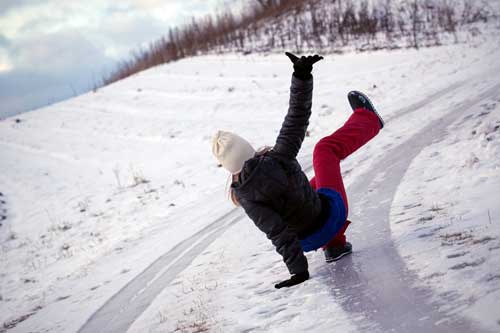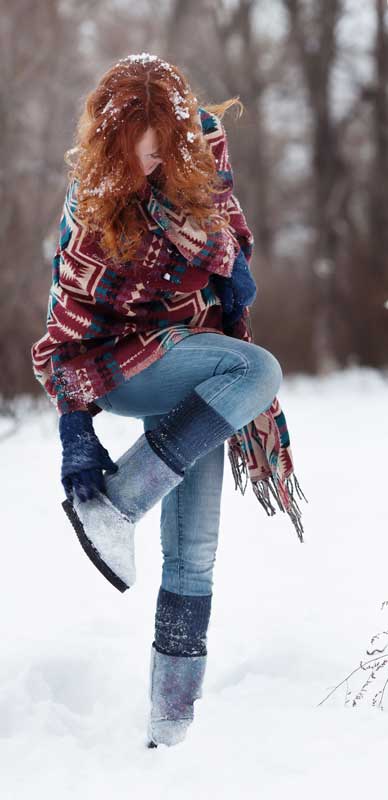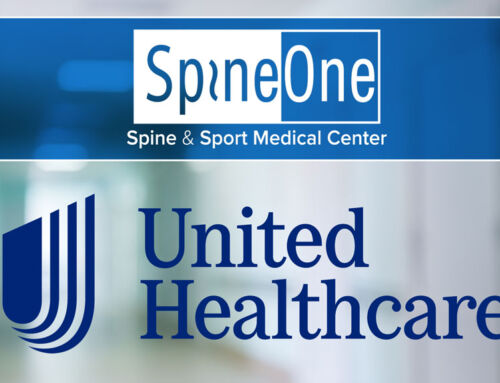How to Treat Spine Injury from Slips & Falls

With slick sidewalks and driveways, some of us will have the unfortunate experience of a slip and fall on ice this winter. Slips, trips, and falls are more frequent due to the weather and icy conditions. Back injuries from slipe and falls are likely to occur. So what can you do to prevent these accidents and what course of action should you take if a slip results in a hurt back?
Preventing Slips & Falls
See a Doctor Today
The most effective way to prevent slips and falls is to wear appropriate footwear. A good pair of boots is often designed to provide more traction in slick conditions. These boots keep you far steadier than you would be in your average tennis or dress shoes. Also, if you do happen to lose your footing, calf- or knee-high boots will help keep you from rolling an ankle.
If it’s winter and you don’t have snow boots, there are several traction devices available that fit over your shoes to provide extra grip for icy surfaces. Even if you do have snow boots, the extra traction may be helpful in really slick conditions.
While the extra traction of boots will help with solid footing, its not the only thing that can keep you on your feet. You should also adjust your gait and walking style for the icy conditions. Try taking shorter steps to start with and to land on as much of your foot as possible. Landing with your heel doesn’t provide as much contact between the rubber of your shoes and the ice, which often leads to lost traction and a painful fall. Landing with the flat of your foot after a small step provides maximum stability on icy surfaces.
When Falling is More than a Tumble – Back & Neck Pain from Slips & Falls
Most of the injuries we sustain from slips & falls involve the deep muscles of our backs. Losing your balance on a slick or icy surface triggers a reflex to prevent you from falling. In this case, you may experience acute strain that may feel like you pulled your back but is in reality an injury of your muscles. Signs and symptoms of a lower back muscle strain include tenderness, stiffness, and pain described as either dull, achy, or occasionally sharp with certain movements. For this type of pain, rest should be your first option. Over the next couple of days, try to take it easy on your back. If you feel able, try some gentle stretches to test your range of motion and the severity of your pain.
When your body reflexively tries to protect itself during a far, the postural muscles within your spine and core tense up. This tensing and the resulting impact can damage spinal muscle fibers and in some cases may lead to misalignments of vertebral joints or disc injuries (herniation or bulge). In this way, you can “pull” your lower back even if you manage to keep yourself from falling.
If you fall on your back and experience severe pain that makes breathing or standing difficult, you should have a thorough examination by a healthcare professional immediately. If you experience any of the following symptoms, or your pain lasts more than a few days, call us for an evaluation. We can usually see you the same day you call.
- Difficulty breathing or standing
- Pain while sitting
- Pain radiating down your leg when trying to straighten your knee
- Risk factors such as osteoporosis
If you’re worried that you may have seriously hurt yourself, have a medical professional like our SpineOne doctors evaluate you for spinal injuries. The treatment plans we offer for acute injuries are minimally-invasive alternatives to ongoing medication regimens, and are designed to alleviate your pain so you can maintain an ongoing wellness program.



